Col du Tourmalet: The crowning climb of the 2023 Tour de France Femmes
An in-depth look at the iconic summit finish on stage 7 and its likely crucial role in the battle for yellow
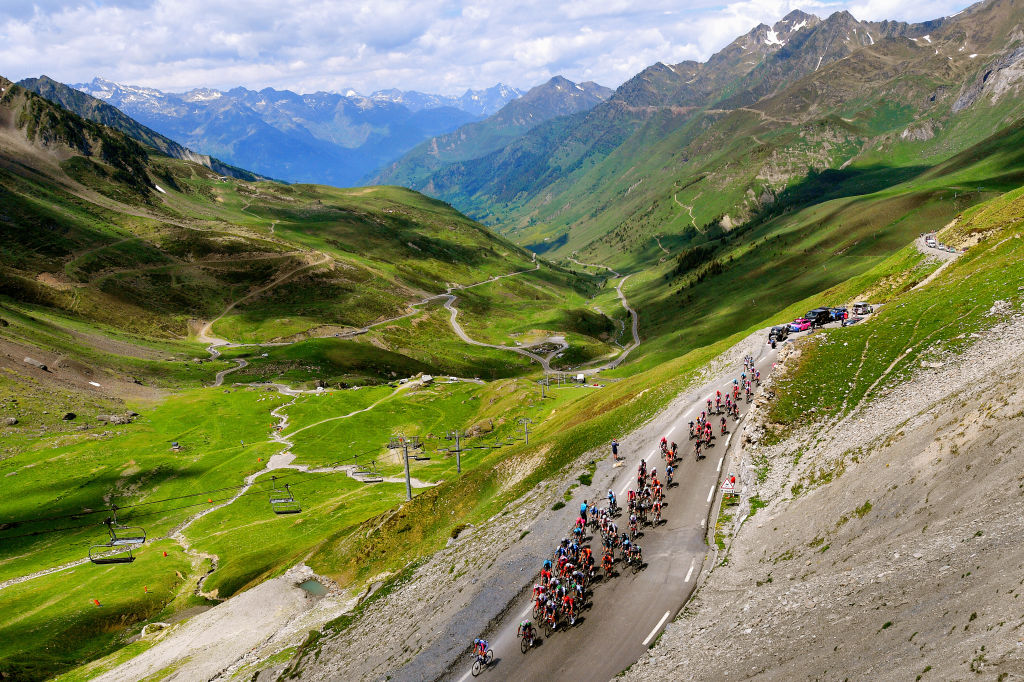
In 2022 La Super Planche des Belles Filles was the crowning glory of the Tour de France Femmes and, while it was a challenging and exciting climb that had been home to some crucial moments in the men’s race, the depth of its place in the folklore of the French Grand Tour holds no comparison to the Col du Tourmalet.
It’s a mountain that even those with only a passing interest in the race for yellow know is synonymous with the event, its towering presence in the Pyrenees and the race history making it impossible to ignore.
While the 2022 reintroduction of the women's Tour de France – with much of the fanfare and mystique of the long-running July Grand Tour – helped elevate interest in the women’s side of the sport to a new level, the sheer presence of the 2,115-metre mountain pass has the potential to lift it to yet another.
The Col du Tourmalet is not just a beast of a climb, but a beast of a climb where very few will be unaware of just how tough it really is. There will be absolutely no room for doubt about the scale of the challenge the women’s peloton is taking on and every reason for viewers to be attuned to the gravity of the stage and in anticipation of an unforgettable cycling moment, carve out time in their calendar to make sure they don’t miss out.
The race route is missing Paris in 2023, partly due to the organisers' desire to take in different areas, including the iconic climb. But they've perhaps opted for something more crucial to the flavour of the Tour in adding the iconic mountain, which in clear weather provides a vantage point from one of the highest paved passes in the Pyrenees that makes it feel like the whole world is at your feet. Regardless of the view, that is exactly how the winner of stage 7 on July 29 is bound to feel.
The location
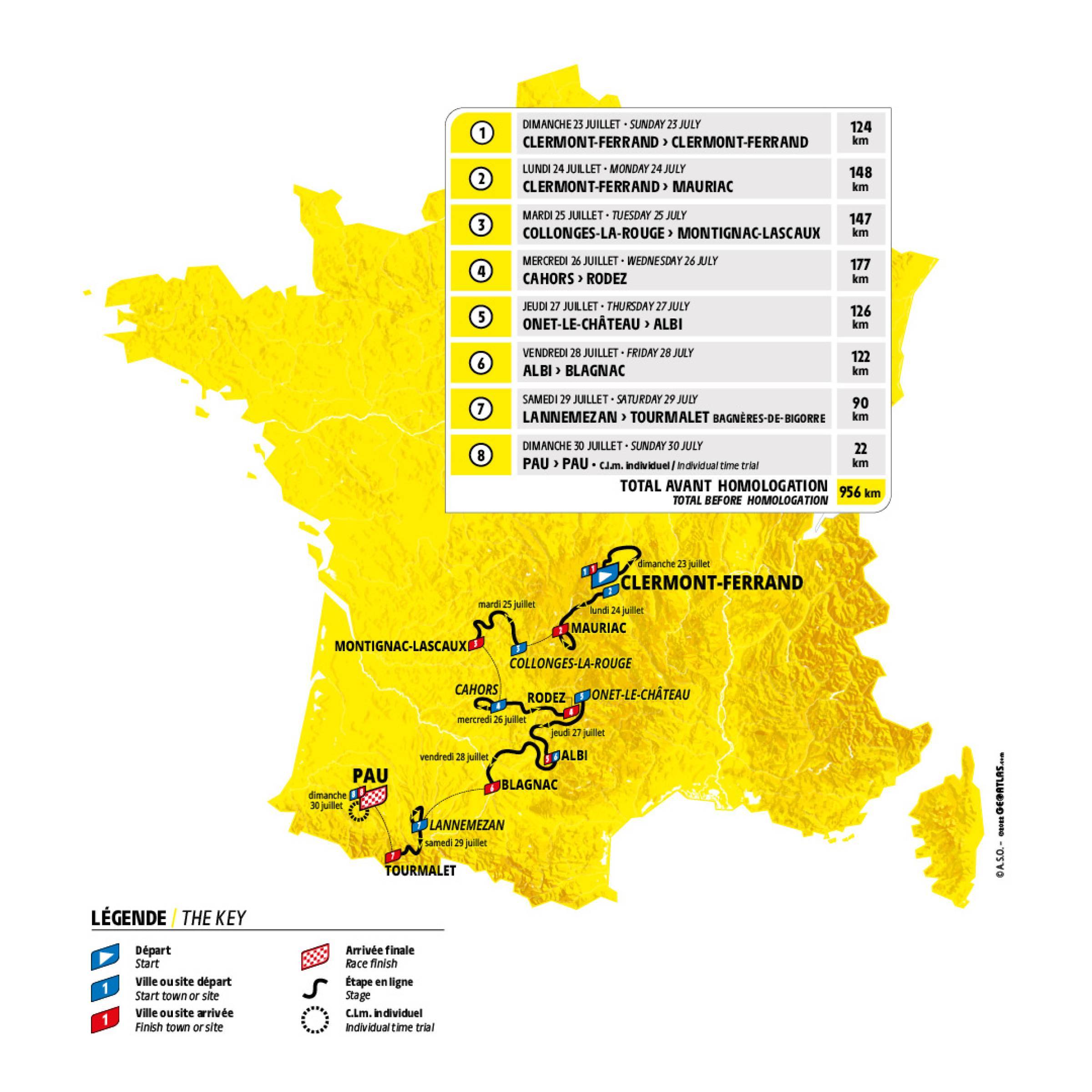
The Col du Tourmalet sits in the Pyrenees, a mountain range which straddles the Spanish border and is just about as far from Paris as you can get while still remaining in France. It will be the southernmost point of the 2023 edition of the race, which started in Clermont-Ferrand.
The climb
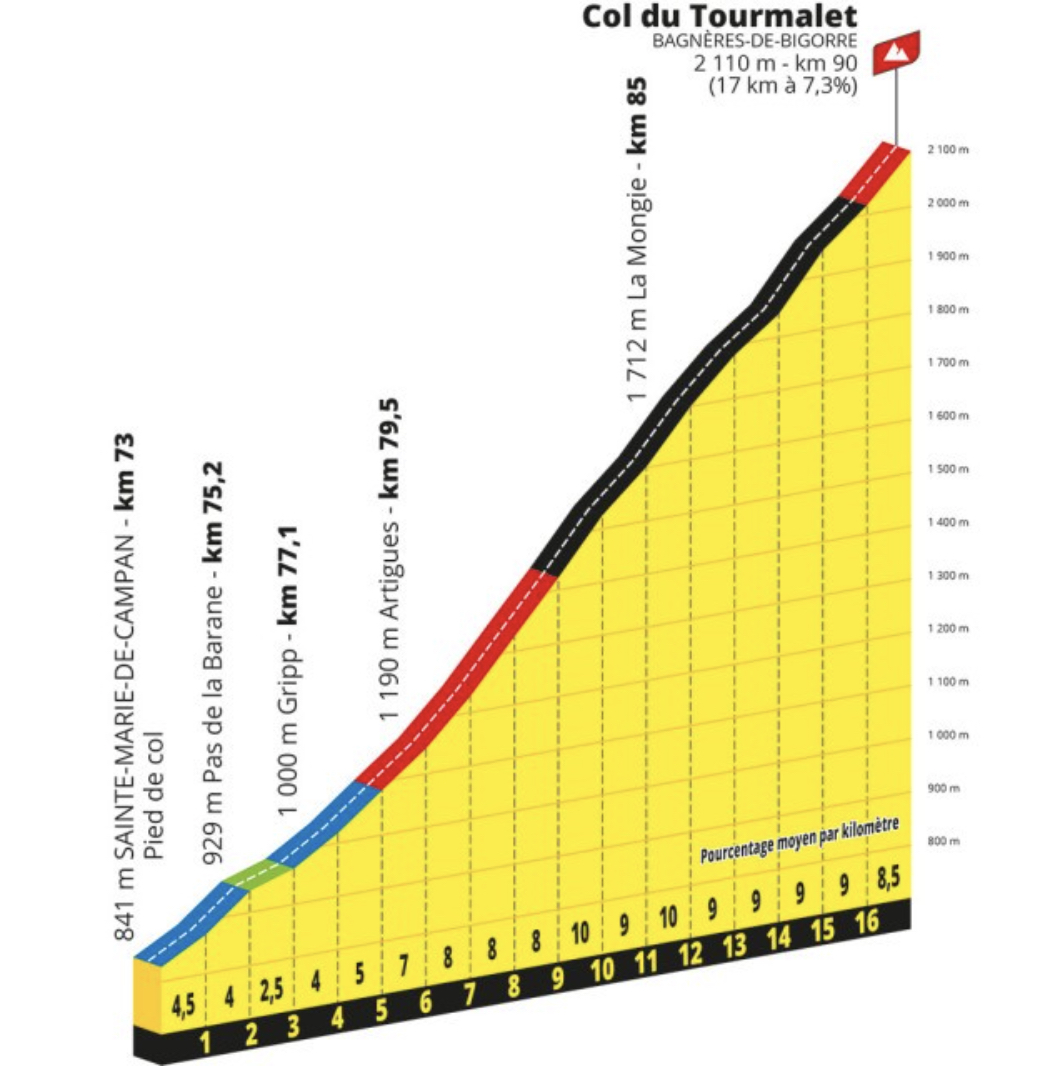
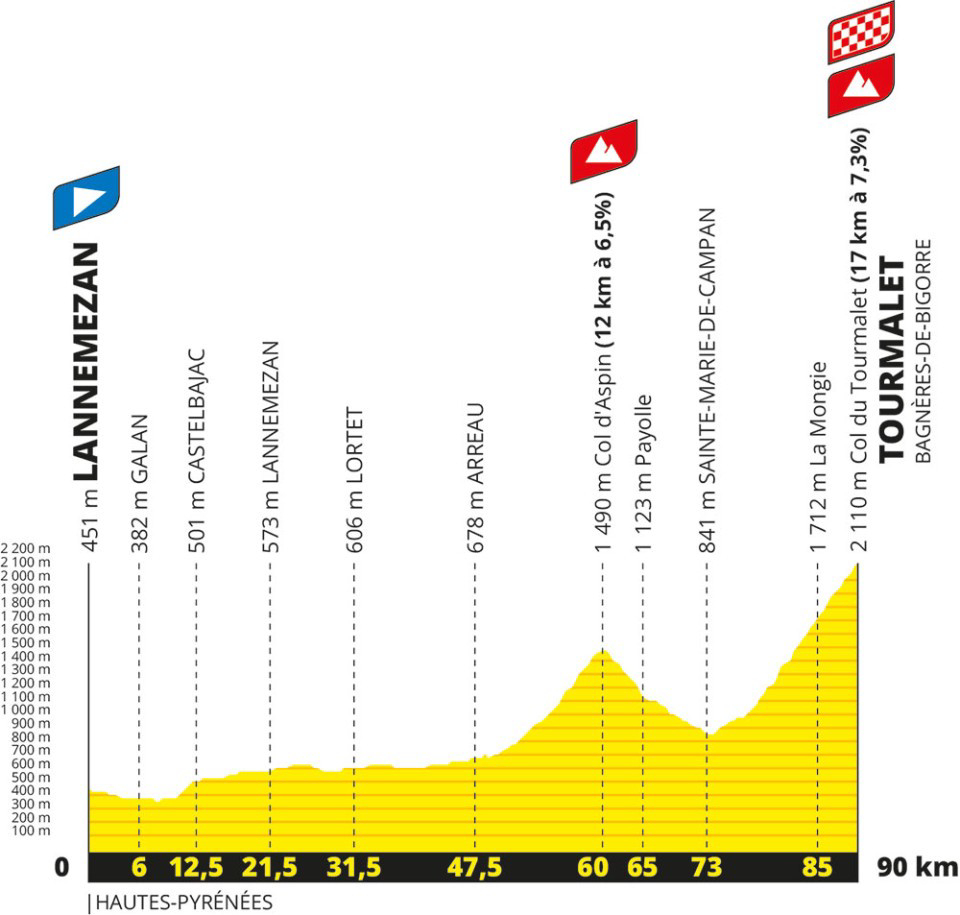
The Col du Tourmalet takes the Tour de France Femmes to 2,110 metres. The heights of the Pyrenean giant come straight after the more moderate altitude of the Col d’Aspin (12km at 6.5%), which commonly sees cows peacefully grazing roadside on the way to its peak at 1,490 metres when the race is not in full swing. After the descent of the Col d’Aspin, the route takes the race to Sainte Marie de Campan, where a turn in the road signals the climbing quickly begins all over again with 17km of the 90km stage 7 remaining.
The latest race content, interviews, features, reviews and expert buying guides, direct to your inbox!
There is an easing into the 17km ascent averaging 7.3%, almost enough to lull a rider into false optimism about just how hard what is to come will be, as the first five kilometres deliver gentler gradients averaging mainly from 4 to 5 percent but with one kilometre of respite at just 2.5%.
Then, however, the mountain starts digging in its heels, ramping up to 7, 8 and then 10% for the remainder of the first 10km. As the climb approaches La Mongie and beyond there is no letting up, with 9% and 10% gradients which may have many riders wishing that this stage in fact ended at the ski resort which has played host to a number of Tour de France stage finishes.
However, there is still at that point 5km left, though it's bound to feel like much more, and it is a stretch that could provide an opportunity to lay down a gap-opening move for some or just to keep the pedals turning in the hope of making it within the time cut for others. The gradient barely eases, holding at 9% or above on the exposed slopes above La Mongie until that final kilometre, when it dips to just 8.5% as the finish line and memorable iron statue approaches.
The end of the stage could also decide the final destination of the yellow jersey, which has been held by Lotte Kopecky (Team SD Worx) for the first six days.
The history
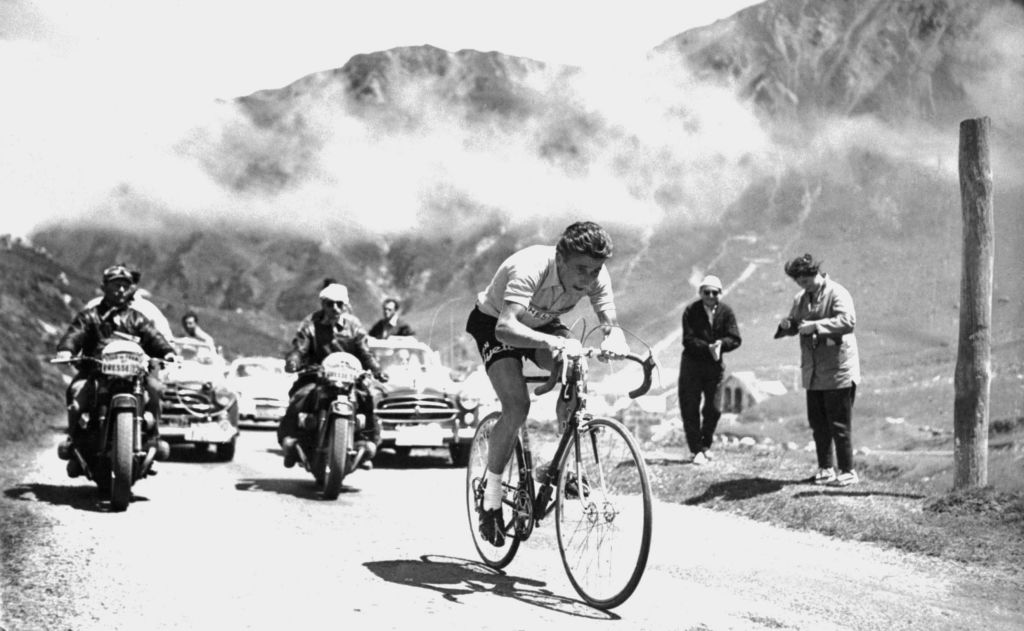
The Col du Tourmalet made its first appearance at the men’s Tour de France in 1910 when Octave Lapize, the first rider over the top, went onto win in Paris. Since then it has become the most used of the mountain passes, making it a climb inextricably linked with the race.
There have been three stage finishes on top of the climb, one in 1974, which was won by Jean-Pierre Danguillaume, and then in 2010 – the 100th anniversary of the climb’s first inclusion in the race. That was a fierce duel to a misty summit between Andy Schleck and Alberto Contador, with Schleck winning the stage but failing to dislodge Contador from yellow. Then in 2019 Thibaut Pinot took victory ahead of the yellow clad Julian Alaphilippe.
Of course the climb also featured in the final half of stage 6 in the 2023 edition, proving a decisive point with Tadej Pogačar (UAE Team Emirates) and Jonas Vingegaard (Jumbo-Visma) charging away from their overall rivals on the Tourmalet and opening the door for a two way battle on the finishing ascent to Cauterets-Cambasque.
The history of the climb, however, goes beyond the men’s racing with the Tour Féminin. It may not have been an official women’s Tour de France like was run from 1984 to 1989, but it delivered the women’s peloton onto many of the event's key climbs. The Tour Féminin finished on top of the Tourmalet in 1994, 1996 and 2000, with Lithuanians, Jolanta Polikeviciute and Edita Pucinskaite, winning the first and last while Italy’s Fabiana Luperini beat Jeannie Longo in 1996.
In a Cyclingnews article looking at the history of women’s stage racing in France Luperini recounted: “In 1996, I remember the finish at the top of the Tourmalet. My teammates got me back again [after a crash], we were more than 5 minutes behind from the group. They managed to bring me back to the group at the foot of the Tourmalet and although I was all sore and bleeding, I had to win to repay them for their work. I won at the top of Tourmalet and pulled on the yellow jersey.”
Luperini won the overall of the 12 stage race that year and, just as the Tourmalet was crucial in the battle for yellow then, it also is bound to be in 2023.
Potential impact
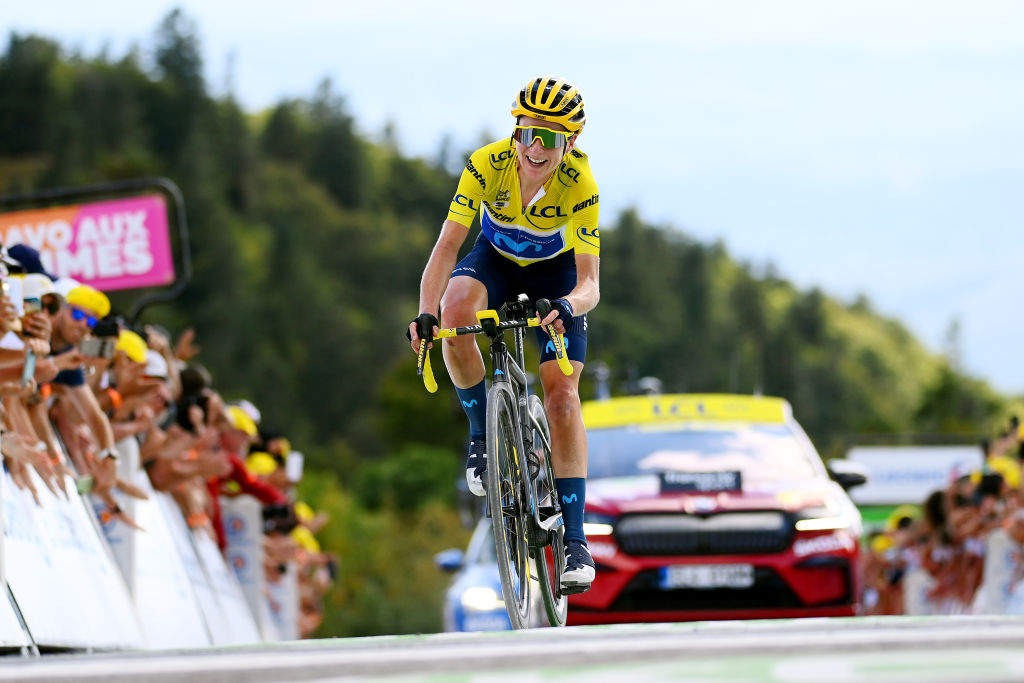
Annemiek van Vleuten (Movistar) claimed victory and stepped into yellow on stage 7 of the Tour de France Femmes in 2022 with its three category 1 climbs, the longest being the Grand Ballon (13.5km at 6.7%).
Then, even with the race sewn up, on stage 8 she went on the attack on La Super Planche des Belles Filles, a 7km long climb with an average gradient of 8.7% that would mark the end of the eight-day tour. The Dutchwoman was unquestionably a dominant force on every last one of the climbs, which has raised the question – will she be even more so over the longer and steeper Col du Tourmalet?
And of course it’s not just the Col du Tourmalet that’s going to lead to frayed edges among the peloton, as the preceding Col d’Aspin is no walk in the park either. That means that even though it is the shortest road stage of the race at 89.8km it will certainly be a hard day on the bike, and Van Vleuten has a reputation for reveling in those.
The Giro d’Italia Donne, where Van Vleuten swept to her fourth victory with a dominant performance, was also an impressive sign of her form coming into the race but one rider who is slated as her key rival, Demi Vollering (SD Worx), wasn’t in Italy. That meant it was a matter of waiting for the opening stages of the race in France to see just whether last year’s runner up looked ready to take the challenge to the rainbow clad defending champion.
Stage 4 brought an answer, and that answer was yes. The SD Worx rider pulled out a two-second gap to Van Vleuten on the short steep climb to the line, also grabbing another 6 seconds in time bonuses by securing second place. Vollering had struck the first blow and on top of that Van Vleuten’s accelerations also failed to shed other rivals like Ashleigh Moolman-Pasio (AG Insurance-Soudal QuickStep), Kasia Niewiadoma (Canyon-SRAM) and Elisa Longo Borghini (Lidl-Trek).
But on stage 5 Vollering was given a 20-second time penalty for drafting behind her SD Worx team car and she started stage 6 in seventh place overall. Kopecky leads Moolman Pasio by 53 seconds and defending champion Van Vleuten has moved up to third at 55 seconds. Longo Borghini is fourth on the same time and Niewiadoma fifth, also at 55 seconds.
With just one mountain stage in the 2023 eight-day Tour de France Femmes avec Zwift – and such a brutal one at that – there is no overstating just how crucial the Tourmalet stage is. There’s only so much ground that can be made up in the 22.6km stage 8 individual time trial the following day but it is hard to measure just how much could be lost on a bad day on the Tourmalet.

Simone is a degree-qualified journalist that has accumulated decades of wide-ranging experience while working across a variety of leading media organisations. She joined Cyclingnews as a Production Editor at the start of the 2021 season and has now moved into the role of Australia Editor. Previously she worked as a freelance writer, Australian Editor at Ella CyclingTips and as a correspondent for Reuters and Bloomberg. Cycling was initially purely a leisure pursuit for Simone, who started out as a business journalist, but in 2015 her career focus also shifted to the sport.
